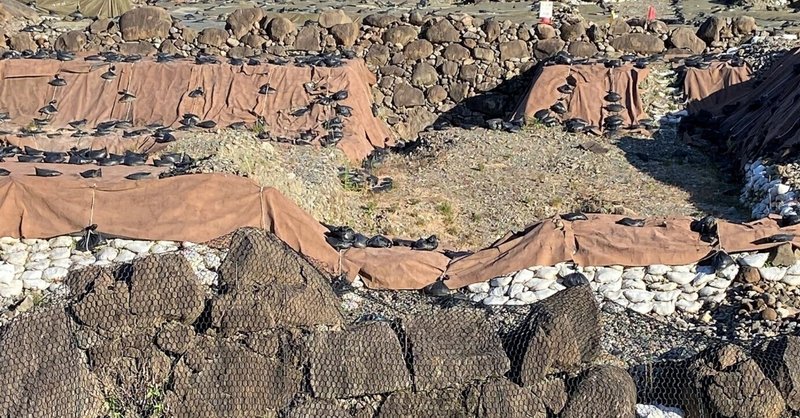
【~連載~静岡の歴史を学ぼう178】Stone wall techniques (1) 石垣の技術(1)
※ この記事は「静岡移住計画Facebook」に掲載しております。
歴史スポット、特にお城を見る時、石垣に注目して下さい。石垣の技術には主に3種類あり、古い順に①野面積み、②打ち込みはぎ、③切り込みはぎ と言います。今日はそのうちの①野面積み、②打ち込みはぎについて紹介致します。

(駿府城跡天守台発掘現場より)
Stone wall techniques (1)
石垣の技術(1)
Stone walls were an important part of a Japanese castle's foundation.
石垣は日本の城の基礎で重要な箇所です。
Towards the end of the Warring States period in Japan, stone wall techniques rapidly improved.
日本の戦国時代の終わりにかけて、石垣を積む技術は急激に進化しました。
The different stone wall techniques can be seen in the present-day Sumpu castle park.
違った石垣の技術を現在の駿府城公園で見ることができます。
Between 2016 and 2020, ruins of the old Sumpu castle were excavated.
2016年から2020年にかけて、古い駿府城の遺跡が発掘されました。

Two types of stone walls were mainly unearthed; one dating back to the Tensho period (1573-1585) and the other to the Keicho period (1596-1615).
主に2つのタイプの石垣が出土しました。一つは1573年から1585年にかけての天正期、もう一つは1596年から1615年にかけての慶長期に造られたものです。
(江戸幕府成立は1603年。徳川家康公が大御所として駿府に移り住んだのが1607年)

The Tensho-period stone walls used the technique called 'Nozura-zumi'.
天正期の石垣には「野面積み」という手法を使っていました。
"Nozura" literally means natural or unprocessed stones from the mountains.
「のづら」は自然の石もしくは山からとってきた加工されていない石のことです。
These large, unprocessed stones were just piled up according to shape.
これらの大きい、加工されていない石が形状に応じてただ積まれていました。
At that time, walls were low because of the simple building technique.
当時、このシンプルな工法のため、石垣は低いものでした。

Toyotomi Hideyoshi ordered Tokugawa Ieyasu to build the Sumpu castle as a base for attacking eastern Japan.
豊臣秀吉が徳川家康に東国への攻撃の拠点として、駿府城を築城するように命じたのでした。
A more advanced stone wall technique used in the Keicho period was 'Uchikomi-hagi'.
慶長期には、より進歩した石垣の技術「打ち込みはぎ」が使われました。
"Uchikomi" literally means 'to drive in'.
「うちこみ」とは文字通り「打ち込む」ことを意味します。
As the term suggests, smaller stones were fitted into the gaps between big stones.
言葉通り、小さい石が大きい石の間の隙間にはめ込まれました。

This newer technique stabilized the stones, allowing stone walls to be built higher.
この新しい技術を使うことで石垣は安定し、より高い石垣を造ることが可能になりました。
Furthermore, the rocks were cut and processed to reduce the gaps between them.
さらに、岩を切り、加工して、岩の間の隙間を減らしました。
This technique also improved during the Keicho period.
この技術も慶長期に発展しました。
In this period, Tokugawa Ieyasu built a large castle to show off his authority.
この時代、徳川家康は権威を示すために大きな城を築き上げました。

この像のすぐ裏側が駿府城跡天守台発掘調査現場
At that time, open wars were rare, but castles still played an important role in ruling Japan.
当時、主だった戦争はほとんどありませんでしたが、城には日本を治める上で重要な役割がありました。
Two types of stone walls can be seen in the same excavation site at the Sunpu castle park.
二つのタイプの石垣が駿府城公園の同じ発掘現場で見ることができます。
Enthusiasts of Japanese castles must be thrilled to see this site.
日本の城ファンにはこの光景を見られることがたまらないに違いありません。

手前が慶長期石垣(打ち込みはぎ)

(駿府城跡天守台発掘調査現場)
この記事が気に入ったらサポートをしてみませんか?
